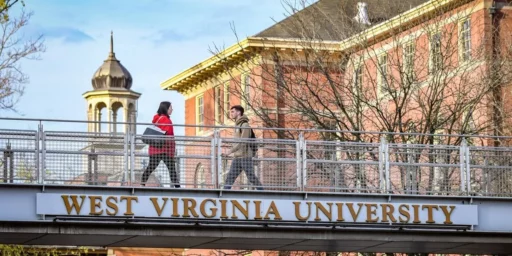Why College Tuition is Growing So Fast
 Artificial intelligence guru Patrick Henry Winston, who has been involved with MIT as either a student or faculty member since 1961, notes that tuition increases at the venerable technical school have radically outpaced inflation during that period.
Artificial intelligence guru Patrick Henry Winston, who has been involved with MIT as either a student or faculty member since 1961, notes that tuition increases at the venerable technical school have radically outpaced inflation during that period.
So relative to the rest of the economy, MIT’s educational productivity has lagged behind by a factor of about 2.75 over the past 50 years.
I’m not really surprised. The last great technical contribution to education was the development of fast, cheap copying machines and before that the invention of the printing press in 1440. I don’t count computers, because I think that, for the most part, they just make us stupid. Education remains labor intensive out of proportion to just about everything else.
Also, there is the matter of growing administration. A while ago, the sometimes acerbic Philip Greenspun ’82, SM ‘93, PhD ‘99 poked around and found that in 1969, MIT employed 962 faculty and 622 administrators. During the past twenty years, the faculty has been stable at about 1,000, an insignificant 4% more than the 1969 number, while administration has grown from about 1,000 to about 1,800, almost three times the 1969 number and a presumably larger multiple of the 1961 number. Interestingly, in 1961, administrators had no productivity-multiplying computers; the only computer was the IBM 7090, in building 26, with impressive tape drives, shown off behind large glass windows along the hallway.
Winston who, among other things, lectures on “How to Speak,” figures the average MIT student is paying the equivalent per hour cost of the “best tickets at the Metropolitan Opera and good tickets at Rolling Stones Concerts,” so professors ought spend a lot of time rehearsing their performances. That much, presumably, is tongue-in-cheek. Whether they’re getting $50,000 a year worth, MIT’s students get more (and less!) than entertainment for their money.
His other points — that education is labor intensive compared to other industries and that the administrative overhead is increasingly expensive — are less amusing but more interesting.
On his homepage, Winston asserts, “I believe technology will take university education through a period of instability—what Andy Grove would call a 10X period—as new educational technology is introduced for the first time since the invention of movable type. This period of instability coincides with a window of global scientific opportunity and engineering challenge.” This is fascinating and he’s certainly better positioned to project this than I am.
While I’ve seen extraordinary technology-driven progress in the ability of faculty to do research, I’ve seen very little impact on teaching. True, there’s increased ability to deliver lectures and interact with students across space and time. But little advancement seems possible in the ability of professors to increase their bandwidth. The number of papers one can grade, students one can advise, and so forth at a level of high quality remains bounded by time and energy. So, I’m not sure how teaching will get less labor intensive.
Doubtless, increased regulation and reporting requirements have contributed to the growing bureaucracy which seems to plague most institutions of higher learning. Even middling schools have half a dozen vice presidents these days.
UPDATE: To be clear, Winston only addresses some parts of the issue. In the case of state institutions, the declining government contribution to covering the costs has necessitated raising tuition. In the case of the highest prestige private institutions, of which MIT is surely one, I suspect that simple supply and demand is the main factor. That is, the demand for the signaling and network effects of these degrees is soaring and there are more than enough parents willing to pay the freight at these prices. (And MIT and their elite counterparts tend to offer subsidies and discounts to a huge percentage of their classes to account for those who can’t.)
via Andrew Samwick






I don’t know how things work in MA but in my state tuition increases are much easier to explain by the complete collapse of state funding from high 70% to under 20%.
That’s likely true in most, if not all, state systems.
Yale is a private institution with a tremendous endowment, however. My guess is that it’s simple supply and demand on their part: They can command this much, so they charge it.
Another reason is just how the university chooses to spend money. When I was an undergrad at Purdue, our President raised $1.5 billion in 2 years, and managed (along with the Presidents of IU and Ball State) to convince the state legislature to raise state funding to public universities.
And yet with every announcement of increased funding or donations, there was almost inevitably an announcement in a hike of tuition. Usually on the same day.
Of course many donors will donate to one specific project, like a building or a program. But many donors don’t–they donate to the university-proper. Those donations are spent on expansions rather then cost saving measures. Buildings instead of students.
I did a quick text search. No “loan” on this or Winston’s page. It is of course all about the redefinition of “affordable” to mean something financed, with government assistance. Of course, with that definition it is in the interests of colleges to maximize tuition, and therefore cash flow. They won’t face declining revenues as long as everyone else plays the same leveraged game. That’s a familiar theme in modern America.
That’s just part of the shift. Back in the day, “affordable” colleges were subsidized by state governments. Low tuitions made them affordable. That pressure was reduced when “cheap loans for everyone” came to be the goal.
Why engage all that new technology when the kids can just get a loan, right?
(This is another case that just be shorted to: incentives matter.)
The same thing is happening locally with school districts regarding the vast increase in administrative costs the last thirty years.
I’m glad you included this. I started work at my current institution in 2007. Next year, the legislature’s proposed appropriation for our budget is 52% of what we received in 2007.
In historical terms, the state leg. plans to reduce our base appropriation to less than the amount my institution received in 1986.
Hand-tatting lace is expensive; machine-made lace is cheap and can be just as good. Technology in education isn’t progressing because it would adversely affect too many of the stakeholders’ incomes.
If the end product were lectures, technology could replace 99% of the workforce. Only the most brilliant, captivating scholars would have jobs and they’d be millionaires.
But even the most amazing professor has limited bandwidth for interacting with students, whether in answering questions, holding office hours, grading exams and papers, offering counseling, writing letters of recommendation, and all the rest.
And that’s to say nothing of scholarly research. Although some large part of that could be dispensed with to no great societal detriment.
James, the fallacy of the “technology can’t replace everything” argument is that it isn’t about replacing everything.
That would be dumb, about as dumb as doing everything the same way it was done 100 years ago, without the technology.
The goal should be to let those who can watch a youtube lecture, read a book, and pass a proctored exam do it. And then free the professors for more discussion, and less lecture.
Of course, if students passes 30% of their classes in self-study, they might wonder why tuition is so high.
(too-quick re-edits always get me)
If universities are vocational schools, then this approach makes sense. Time was, there was more to a college education than memorizing some facts and regurgitating them on an exam. But we’ve certainly gone quite a bit down this road already.
It should be obvious to you that you are putting your values on all students.
I guess that’s the difference. I never said that no one should ever go get an intensely personal educational experience. Go to an Ashram if you want. Or, go to college for business preparation, if that’s what you want.
But geez louise, don’t hold everybody back, or worse yet hold everyone to a higher tuition cost, because that is the path you’d choose.
BTW, a proctored exam can check more than “regurgitated facts.”
It could ask the student to name the logical fallacy used when my “if students passes 30% of their classes in self-study” becomes your “Time was, there was more to a college education than memorizing some facts and regurgitating them on an exam.”
(It’s been a while for me, I’m not sure if it is purely “slippery slope” or just “improper generalization.”)